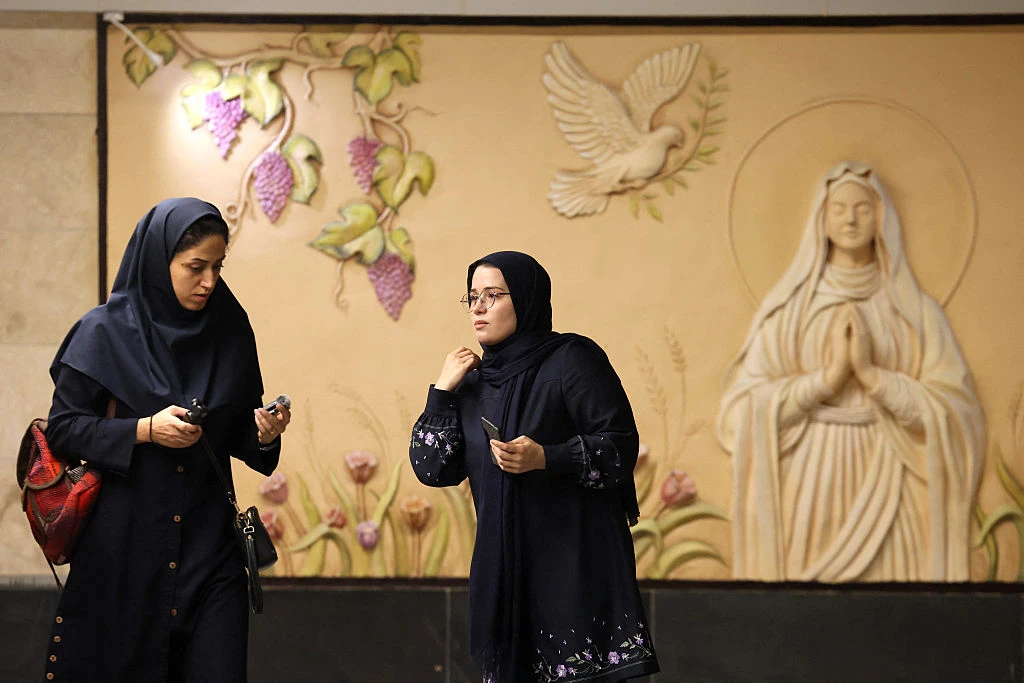ACI MENA, Oct 20, 2025 /
12:51 pm
This past week, social media was flooded with images showing a new metro station in Tehran called the “Virgin Mary” station. The photos went viral, sparking widespread debate among those who hail it as a rare gesture of openness, those who dismiss it as a staged act to polish the regime’s image, and others who simply wonder if it even exists.
According to the posts circulating online, the “Virgin Mary” station is located on Line 6 of the Tehran metro near the St. Sarkis Armenian Cathedral.
According to France 24, the station has been under construction for 10 years. Its arched concourse and dome feature religious frescoes and artwork honoring the Virgin Mary alongside what appears to be a church, presumably the cathedral.

For many, the idea of a metro station in Iran named after the mother of Jesus is a surprise. Others see it as consistent with Shiite culture, which also venerates the Virgin Mary. Still others interpret it as an attempt to highlight the country’s religious diversity.
Many argue that such a move does not align with the Islamic Republic’s record in dealing with religious minorities, and some dismiss it as propaganda designed to project a more tolerant image of the regime to international audiences.
The official X account of the Iranian Embassy in Yerevan weighed in, describing the station as “a beautiful sign of coexistence between Iranians and the Armenian community.”
In reality, however, this “coexistence” falls far short of international standards on religious freedom and human rights.
Iranian law, for instance, prohibits evangelizing or conversion from Islam to Christianity and enforces strict religious and social codes. During the month of Ramadan, no person of any faith is permitted to eat in public, and during Muharram, followers of all religions are barred from holding weddings or celebrations.
In addition, the compulsory hijab remains strictly enforced for women, and religious minorities are largely excluded from government employment, leaving communities such as Armenian Christians often feeling like second-class citizens.
Even if the metro station is a symbolic gesture toward Christians, particularly Armenian Christians, it serves as a reminder of a harsher reality: Christians in Iran continue to face arrest, torture, and imprisonment for their faith. In February 2024, an Iranian judge sentenced Hakop Gochumyan to prison for engaging in what authorities described as “illegal Christian activities.”

According to the 2024 annual report by Article18, a London-based nonprofit advocating for persecuted Iranian Christians, 166 believers were arrested in 2023, a third of them simply for owning more than one copy of the Bible.
Yet despite this climate of persecution, Christianity continues to grow in Iran. In 2021, Open Doors estimated that nearly 800,000 Iranians had converted from Islam to Christianity — a remarkable trend that persists in secrecy and silence.
This story was first published by ACI MENA, CNA’s Arabic-language news partner, and has been translated for and adapted by CNA.


